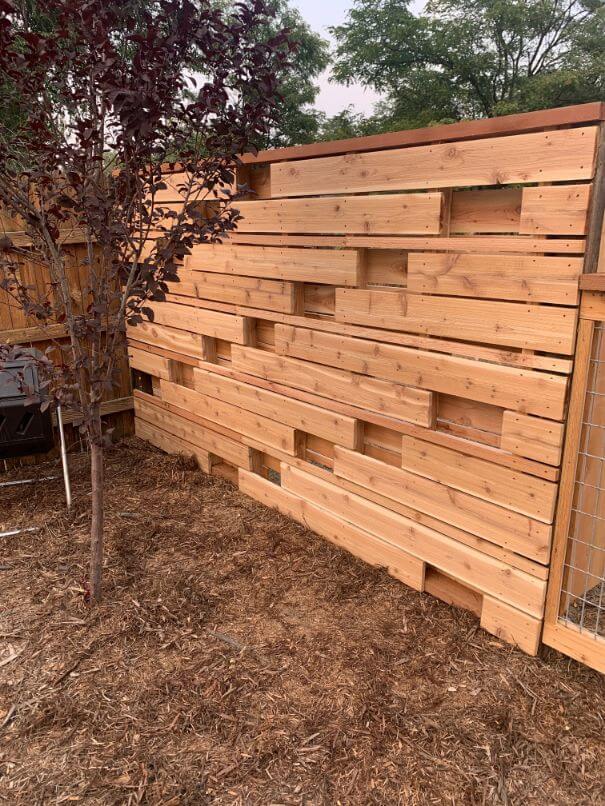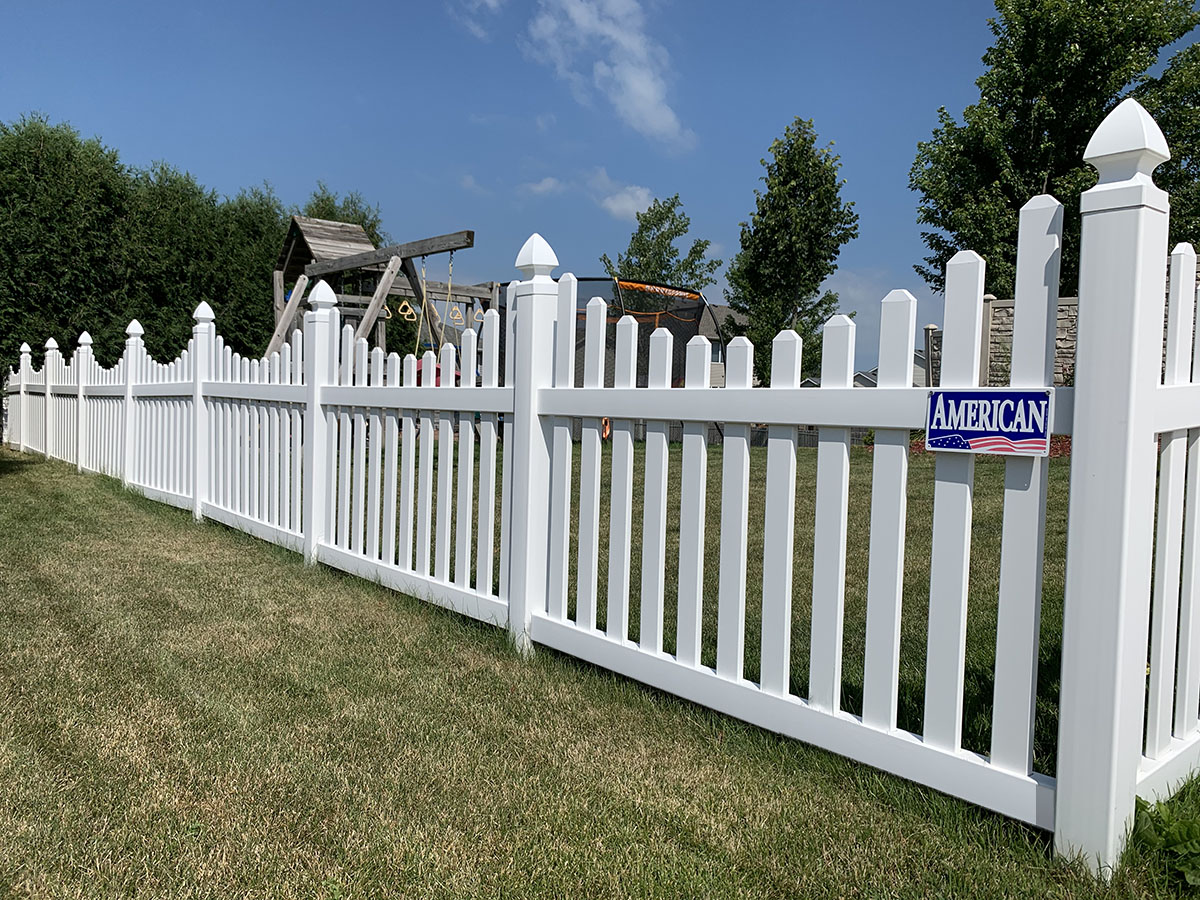Featured
Your fence is subjected to numerous weather condition problems year-round, and while it serves as an important part of your residential property, it's likewise one of the most susceptible aspects when it comes to weather-related damages. Here are some efficient strategies to protect your fence from weather-related damage.
Wooden Fencings: While timber is a timeless choice for secure fencing, it is at risk to warping, bug, and rot damages, particularly in locations with high moisture. Pressure-treated timber or cedar is extra sturdy, however routine upkeep is crucial to maintain it in good problem. Vinyl Fence: Vinyl is an excellent choice for those looking for a low-maintenance and weather-resistant fence. It's impervious to dampness, will not warp or split in the warm, and resists fading from UV rays. Steel Secure fencing: Wrought iron and aluminum are long lasting products for fence, however they need a rust-resistant layer to safeguard them from deterioration as a result of dampness. A protective layer or routine upkeep can avoid corrosion and prolong the life of metal fences. Compound Fence: Made from a blend of wood fibers and plastic, composite fencings are highly resistant to weather aspects, consisting of dampness, uv, and warmth rays. This material offers an equilibrium of longevity and visual allure. Choosing a product suited to your environment will supply far better defense for your fence the lengthy term.
Seal or Tarnish the Timber: Applying a premium sealer or tarnish to your wood fencing creates a water-proof obstacle that avoids moisture from entering the wood. It likewise aids protect the timber from UV rays, which can trigger discoloration and drying. Reapply Sealer Regularly: In time, the protective obstacle of your sealer or stain can wear down. Depending upon your climate, it's a good idea to reapply every one to two years to keep the wood secured. This therapy will certainly protect the fence's appearance, protect against rot, and extend its life-span.
![]()
For additional defense, think about making use of wind-resistant mesh screens or panels in locations where wind is a substantial worry. This additional layer can help decrease the force that the wind exerts on your fencing.
Inspect Water Drainage: Make certain that the ground around your fence slopes far from the articles. Correct drain enables water to stream far from the fence, avoiding dampness build-up. Mount Water Drainage Solutions: In areas where drain is a problem, consider including a French drainpipe or gravel around the base of your fencing posts to reroute water away from the framework. Great drain can protect against rot, corrosion, and other kinds of weather-related damage.
![]()
![]()
Concrete Grounds: Set fencing articles in concrete to stop them from loosening gradually as a result of soil erosion or changing ground. Steel Braces: Including metal braces to fencing posts can supply extra stamina and reduce the danger of damaging or leaning. Strengthening your posts makes sure that your fence will certainly stay in area, even throughout serious climate.
For wood fencings, gently wash the surface area with a moderate detergent to get rid of dirt and crud. For plastic fences, utilize a soft fabric and cleansing remedy to avoid accumulation. For metal fences, check for corrosion and sand it off prior to applying a fresh layer of paint. Conclusion. Your fence is an important attribute of your residential or commercial property, and with the right care, it can endure the challenges posed by the climate. By picking sturdy materials, executing routine upkeep, and reinforcing weak factors, you can shield your fencing from the elements and prolong its life. Regular evaluations, using safety finishes, and taking steps to regulate wetness and wind direct exposure will certainly help ensure that your fence continues to be solid, useful, and attractive for several years to find.
- Select Weather-Resistant Products. The materials you pick for your fence can have a significant effect on its capacity to stand up to the elements. Various materials are much better outfitted to deal with specific weather. Right here's a breakdown of exactly how numerous materials stand up against the weather:
Wooden Fencings: While timber is a timeless choice for secure fencing, it is at risk to warping, bug, and rot damages, particularly in locations with high moisture. Pressure-treated timber or cedar is extra sturdy, however routine upkeep is crucial to maintain it in good problem. Vinyl Fence: Vinyl is an excellent choice for those looking for a low-maintenance and weather-resistant fence. It's impervious to dampness, will not warp or split in the warm, and resists fading from UV rays. Steel Secure fencing: Wrought iron and aluminum are long lasting products for fence, however they need a rust-resistant layer to safeguard them from deterioration as a result of dampness. A protective layer or routine upkeep can avoid corrosion and prolong the life of metal fences. Compound Fence: Made from a blend of wood fibers and plastic, composite fencings are highly resistant to weather aspects, consisting of dampness, uv, and warmth rays. This material offers an equilibrium of longevity and visual allure. Choosing a product suited to your environment will supply far better defense for your fence the lengthy term.
- Regularly Treat Wood Fences. If you have a wooden fence, securing it from temperature level, sunshine, and moisture variations is vital. Wood can absorb moisture from rain, snow, or humidity, causing it to rot and degrade. Here's how you can secure wood fencings:
Seal or Tarnish the Timber: Applying a premium sealer or tarnish to your wood fencing creates a water-proof obstacle that avoids moisture from entering the wood. It likewise aids protect the timber from UV rays, which can trigger discoloration and drying. Reapply Sealer Regularly: In time, the protective obstacle of your sealer or stain can wear down. Depending upon your climate, it's a good idea to reapply every one to two years to keep the wood secured. This therapy will certainly protect the fence's appearance, protect against rot, and extend its life-span.

- Install Windbreaks. Strong winds can trigger considerable damage to fencings, especially those made of tall structures or light-weight materials. These all-natural barriers can help deflect wind, protecting against straight gusts from damaging your fence.
For additional defense, think about making use of wind-resistant mesh screens or panels in locations where wind is a substantial worry. This additional layer can help decrease the force that the wind exerts on your fencing.
- Ensure Correct Drainage Around Your Fencing. Standing water is one of the leading sources of fencing damages, especially for wood fencings. Water can damage the fencing posts, causing them to rot and weaken faster. To stop this:
Inspect Water Drainage: Make certain that the ground around your fence slopes far from the articles. Correct drain enables water to stream far from the fence, avoiding dampness build-up. Mount Water Drainage Solutions: In areas where drain is a problem, consider including a French drainpipe or gravel around the base of your fencing posts to reroute water away from the framework. Great drain can protect against rot, corrosion, and other kinds of weather-related damage.

- Trim Overhanging Branches and Vines. Trees and plants near your fence may appear like an attractive enhancement, however they can pose dangers when left uncontrolled. Overhanging tree branches and creeping plants can trigger damages to your fence during tornados or high winds. Furthermore, vines can trap moisture versus wooden fences, accelerating the rotting procedure. To secure your fencing, cut any type of branches or plants that hang over or near the fence regularly. This will lessen the opportunity of dropping debris and stop moisture build-up.
- Enhance Fence Posts. Fencing blog posts are susceptible to changing, leaning, and decomposing, particularly throughout periods of extreme climate. If your fencing is in a location that experiences high winds or freezes throughout winter, it's vital to strengthen the messages to preserve security.

Concrete Grounds: Set fencing articles in concrete to stop them from loosening gradually as a result of soil erosion or changing ground. Steel Braces: Including metal braces to fencing posts can supply extra stamina and reduce the danger of damaging or leaning. Strengthening your posts makes sure that your fence will certainly stay in area, even throughout serious climate.
- Normal Evaluations and Upkeep. Normal examinations are necessary for identifying early indications of weather-related damages. Check your fence after storms or hefty rainfall to look for concerns such as loose boards, drooping messages, or rusted areas. Early discovery of minor troubles can conserve you from pricey repairs in the future. Additionally, cleansing your fence periodically helps maintain its problem. :
For wood fencings, gently wash the surface area with a moderate detergent to get rid of dirt and crud. For plastic fences, utilize a soft fabric and cleansing remedy to avoid accumulation. For metal fences, check for corrosion and sand it off prior to applying a fresh layer of paint. Conclusion. Your fence is an important attribute of your residential or commercial property, and with the right care, it can endure the challenges posed by the climate. By picking sturdy materials, executing routine upkeep, and reinforcing weak factors, you can shield your fencing from the elements and prolong its life. Regular evaluations, using safety finishes, and taking steps to regulate wetness and wind direct exposure will certainly help ensure that your fence continues to be solid, useful, and attractive for several years to find.
Latest Posts
Eco-Friendly Bathroom Remodels with Bath Fitter
Published Apr 19, 25
1 min read
Financing Your Hyundai with Ron Marhofer Hyundai of Cuyahoga Falls
Published Apr 18, 25
1 min read
Ornamental Iron Fence: Beauty and Stamina
Published Apr 18, 25
2 min read